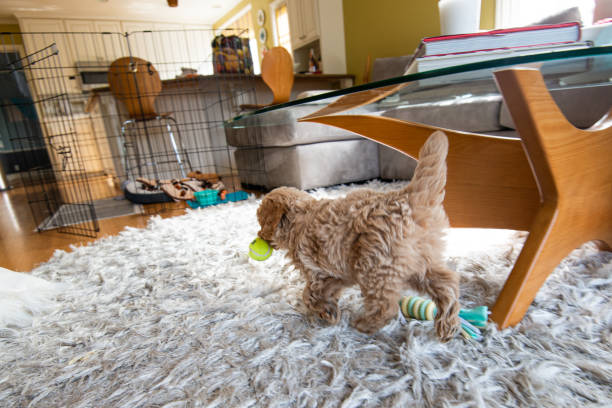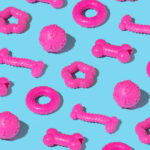For dog owners, caring for pets during the puppy stage is crucial! The puppy stage generally refers to dogs aged 0-6 months, who are small and delicate. We need to pay close attention to every step of their growth. The most significant and challenging phase for puppies is teething. During this period, puppies experience the shedding of baby teeth and the eruption of permanent teeth, accompanied by discomfort like teething pain and dental irritation.
Once puppies exhibit these key teething behaviors, they may start chewing on everything in sight-household items, clothing accessories, electronics, and more. This behavior not only risks health hazards from potentially toxic materials or improper chewing due to underdeveloped teeth but also causes financial loss from damaged belongings!
This is precisely when puppy teething toys become essential for intervention, relief, and healing. Designed specifically to alleviate teething pain and itchiness, these toys provide a safe and appropriate outlet for puppies’ natural chewing instincts. However, precisely because of this demand, countless products of this type now flood the market, offering a vast array of choices. You might be unsure how to select the right and suitable one.
We’re here to help. This ultimate guide will comprehensively introduce you to the characteristics of various puppy teething toys, empowering you to make an informed choice and ensure your beloved dog thrives during this crucial stage.
Looking for Information on Puppy Teething Toys
Understanding Puppy Teething: Why Chew Toys Are Essential
Puppies typically begin teething between 2 and 3 months of age, with permanent teeth fully developed between 6 and 8 months of age. During this period, chewing becomes not only instinctive but also necessary. Without suitable chew toys, puppies often turn to furniture, shoes, or unsafe household items.
Signs of teething include:
- Increased chewing and biting behavior
- Drooling and gum sensitivity
- Whining or irritability
Providing chew toys for teething puppies can significantly reduce these issues while encouraging healthy dental growth. American Kennel Club (AKC) also emphasizes safe chewing as a core part of puppy wellness.Providing chew toys for teething puppies can massage their gums and satisfy their chewing instinct, thus relieving pain. They can also prevent dogs from developing destructive habits, such as chewing furniture. A unique perspective: According to one survey, 83% of owners who provide non-edible chew toys report that they calm their dogs, reduce boredom, and turn teething into an opportunity for bonding.
Common Pitfalls? Offering household items like old socks, which can lead to choking. Instead, opt for purpose-made toys to keep things safe and engaging.
Are Puppy Teething Toys Suitable for the Entire Puppy Stage?
The puppy stage spans from birth to about 12-18 months, divided into phases like neonatal, socialization, teething, and adolescence. Puppy teething toys shine during the 3-6 month window when gums are sorest, but they’re not one-size-fits-all for the whole period. As jaws strengthen around 6 months, softer toys might not hold up, risking pieces breaking off.
For younger pups under 12 weeks, these toys work well for gentle exploration. But in adolescence, switch to tougher options to match their power.
Our take: Don’t ditch teething toys too soon-they evolve into tools for ongoing dental care, extending usefulness beyond the basics.
Tips:
- 0–6 months: Gentle toys for sensitive gums
- 6–12 months: Transition to durable toys designed for stronger teeth
- 12+ months: Introduce adult-level chew resistance
Beyond Teething: Other Puppy Stages Supported by Chew Toys
Chew toys aren’t just for teething; they also promote socialization between 3 and 12 weeks of age by encouraging gentle play and controlled biting. During this stage, stuffed toys can help puppies learn boundaries without causing harm. During adolescence (6 to 18 months), they can relieve stress and curb unwanted behaviors during hormonal changes.
Beyond teething, chew toys help with:
- Socialization: Soft toys encourage bonding and playtime.
- Training: Using chew toys as positive reinforcement.
- Adolescence: Prevents destructive chewing during teenage energy bursts.
- Adulthood: Maintains dental hygiene and reduces boredom.
From a training angle, stuffable toys like KONGs aid crate time by keeping pups occupied. For dental health, flavored chews reduce tartar long-term.
Unique insight: A study shows scented toys boost playtime over 13 times, making them ideal for busy owners juggling puppy energy.
Case in point: Owners report calmer dogs during vet visits prep with these.
Safest Materials for Puppy Teething Toys
- Natural rubber – Soft, flexible, ideal for puppies.
- Silicone – Food-safe, good for gentle chewing.
- Rope – Effective for dental cleaning (supervised use).
- Nylon – Harder chews suitable for older puppies.
The safest chew toys for puppies avoid toxic chemicals, sharp edges, or small detachable parts.
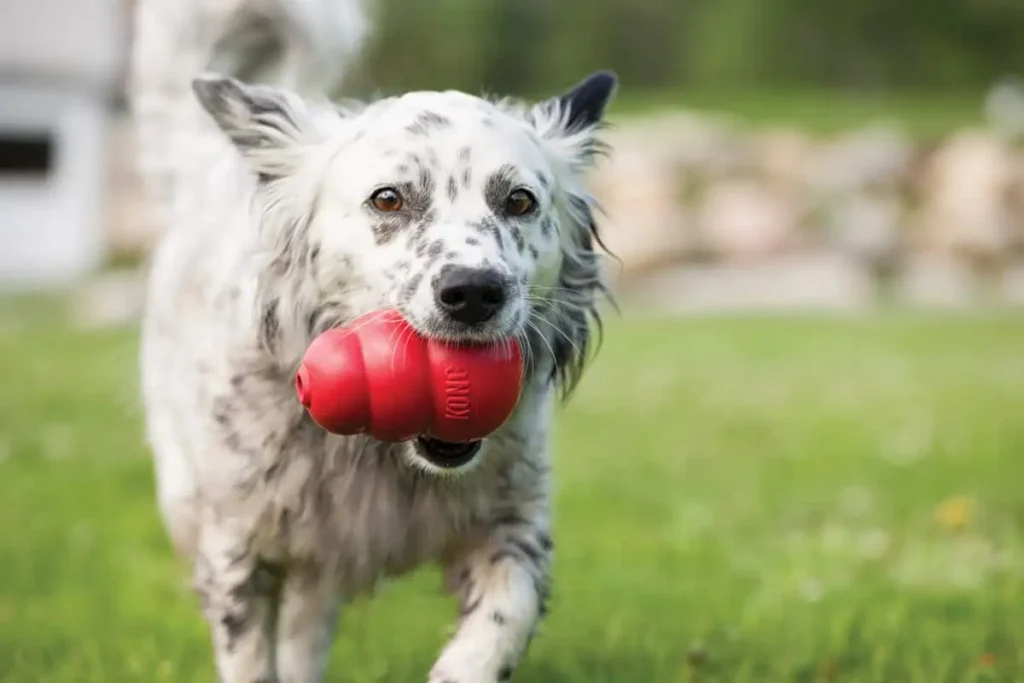
Different Choices of Dog Chew Toys (Organized by Age and Breed)
Tailor chew toys to your puppy’s age for maximum benefit. For neonatal to socialization (0-12 weeks), go soft: KONG Puppy Binkie soothes without overwhelming tiny mouths.
Teething phase (3-6 months) calls for gum-massagers like KONG Natural Teething Rubber or Nylabone Teething Rings-flavored to keep interest high.
Adolescence (6-18 months) demands toughness: Benebone Puppy Chews or West Paw Zogoflex handle stronger bites.
Breed-specific: Chihuahuas favor lightweight ropes; Labradors thrive on robust nylon. For sensitive pups, non-toxic options like Playology Teething Bone stand out.
| Age Group | Toy Type | Example | Benefits |
|---|---|---|---|
| 0-12 Weeks | Soft Plush/Rubber | KONG Puppy Binkie | Gentle on gums, aids exploration |
| 3-6 Months | Teething-Specific | Nylabone Teething Rings | Massages sore spots, flavored appeal |
| 6-18 Months | Durable Nylon | Benebone Puppy Chews | Withstands strong jaws, dental clean |
The Best Chew Toys for Puppies: Top Recommendations
We selected the best chew toys for puppies based on expert reviews, safety ratings, and real-user feedback from sites like AKC and Reddit. Criteria include durability, non-toxicity, and engagement.
- Rubber-Based: KONG Puppy Toy Natural Teething Rubber-stuff with treats for interactive fun; bouncy and durable.
- Nylon/Bone-Style: Nylabone Puppy Teething Toys-flavored for taste, shapes like rings promote hygiene.
- Rope/Plush: KONG Knots Toys (e.g., Elephant)-tough for tugging, soft enough for relief.
- Specialty: Benebone Puppy Tiny 2-Pack-bacon-flavored, ergonomic for small breeds.
- Interactive: Playology Teething Bone-scent-infused spikes massage gums.
- Budget-Friendly: Hurray 3-Pack Puppy Chew Toys-rubber rings gentle for young gums.
| Toy | Material | Price Range | Pros/Cons | Best For |
|---|---|---|---|---|
| KONG Puppy Toy | Rubber | $10-15 | Pros: Versatile, durable; Cons: Needs cleaning | All breeds |
| Nylabone Teething Toys | Nylon | $5-10 | Pros: Flavored, dental aid; Cons: Not edible | Power chewers |
| Playology Bone | Rubber | $12-18 | Pros: Scented, textured; Cons: Pricier | Sensitive gums |
User reviews highlight KONG’s longevity, with many on X calling it a “lifesaver.” Trending in 2025: Scented options like vanilla for longer play.The top 10 veterinary-approved puppy teething toys of 2025 include:West Paw Zogoflex Puppy Toy,Petstages Cooling Teething Stick,Outward Hound Invincibles Plush,EcoKind Puppy Yak Chew,SmartPetLove Puppy Teething Aid,Mammoth Flossy Chew Rope,Chuckit! Indoor Ball
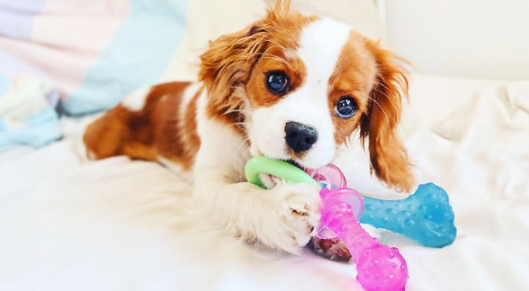
Appropriate Chew Toys for Puppies: Alternatives and DIY Options
Beyond store-bought, natural alternatives like frozen carrots or bully sticks offer edible relief-but vet-check for digestion issues. Rotate toys weekly to fight boredom, storing extras for novelty.
Eco-friendly picks? West Paw uses sustainable materials, appealing to green-minded owners. DIY: Freeze a washcloth soaked in broth for a cheap soother.
Make a simple DIY toy:
- Knot an old t-shirt into a rope.
- Soak in low-sodium broth.
- Freeze puppy teething toys overnight to relieve sore gums.
2025 trend: Eco-toys from recycled rubber, available at local pet shops.
How to Choose the Safest Chew Toys for Puppies
When choosing chew toys for teething puppies, safety comes first. Choose toys made of non-toxic materials, such as hard rubber or nylon, which won’t break. Size is important-too small can be a choking hazard; too large can be easily overlooked. For peace of mind, look for toys that are certified BPA-free and veterinarian-approved.
Avoid toys designed for chewing dogs, such as squeaky toys or cheap plastic toys that shred easily. Breed is important: small dogs need lightweight toys, while large dogs need sturdy, durable toys. Balance budget with quality-multi-packs offer variety without breaking the bank.
To test durability at home:
- Squeeze the toy; it should flex but not crack.
- Tug gently to check seams.
- Freeze it overnight for gum-soothing potential.
Quiz: Is your pup a light nibbler or power chewer? Match to rubber for the former, nylon for the latter.
How to Introduce Teething Toys to Puppies
- Offer the toy when the puppy shows chewing behavior.
- Use positive reinforcement when they choose the toy over furniture.
- Rotate toys weekly to prevent boredom.
Consistency builds strong chewing habits and reduces unwanted behavior.
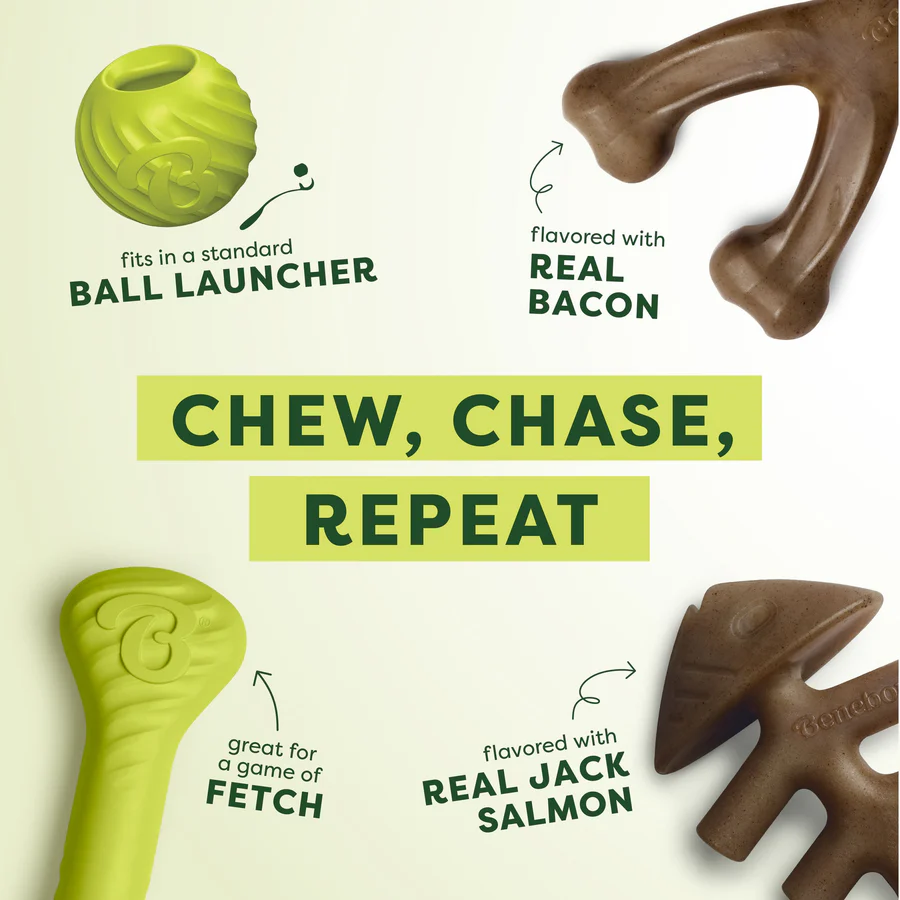
Safety Tips and Common Pitfalls
Always supervise play to catch issues early. Clean toys weekly to prevent bacteria, and replace if worn. Consult your vet for breed-specific advice, especially if swallowing occurs-signs include vomiting or lethargy.
If problems arise, act fast: For choking, perform Heimlich; rush to emergency vet. Transition to adult chews around 6-8 months.
Safety checklist:
- Non-toxic materials only.
- Size-appropriate to avoid swallowing.
- No small parts or strings.
- Freeze for extra soothing.
Link to AKC’s full guide for more: AKC Puppy Teething.
Puppy Teething Toys vs Adult Dog Chew Toys: Key Differences
- Material hardness: Puppy toys are softer to avoid tooth fractures.
- Size: Puppy toys are smaller and easier to grip.
- Durability: Adult chew toys withstand stronger jaws.
- Purpose: Puppy toys focus on soothing gums, adult toys on maintaining dental health.
Transitioning correctly prevents dental issues while keeping playtime engaging.
FAQs About Puppy Teething Toys
Q1:What are the safest chew toys for puppies?
Opt for hard rubber like KONG or nylon Nylabone-durable and non-toxic.
Q2:How long does puppy teething last?
Typically 3-6 months, but chewing may continue to 12 months.
Q3:Are rope toys good as chew toys for teething puppies?
Yes, for tugging and relief, but supervise to prevent fraying.
Q4:What if my puppy swallows part of a toy?
Monitor for distress; contact vet immediately if blocked.
Q5:What are the best chew toys for puppies on a budget?
Hurray 3-Pack or DIY frozen cloths-effective and cheap.
Q6:Can older dogs use puppy toys? Yes, but they may need tougher materials.
Conclusion – Puppy Teething Toys Help Through the Growing Stage
As demonstrated by our research and exploration above, selecting the highest quality and safest puppy teething toys during your puppy’s teething phase is an important and developmentally significant step. The right puppy teething toys not only alleviate discomfort and pain associated with teething, tooth loss, and new tooth growth for your developing puppy, but also promote oral health and overall sensory development.
As our comprehensive guide shows, there are many types of puppy teething toys to choose from-you can select edible chew toys, natural rubber toys, and specialized oral care toys for your puppy!However, it’s crucial to select toys based on your puppy’s age, chewing habits, and specific sensory needs. Avoid toys that are too hard, too small, or contain potentially harmful ingredients. Regularly inspect toys for wear and tear, replacing them promptly when necessary.
It’s important to understand that puppy teething toys are not merely entertainment-they are essential companions for your puppy’s health and well-being.By following this guide, you can assemble a safe and engaging collection of teething toys for your beloved dog, transforming the teething process into a positive shared experience between you and your furry friend.
